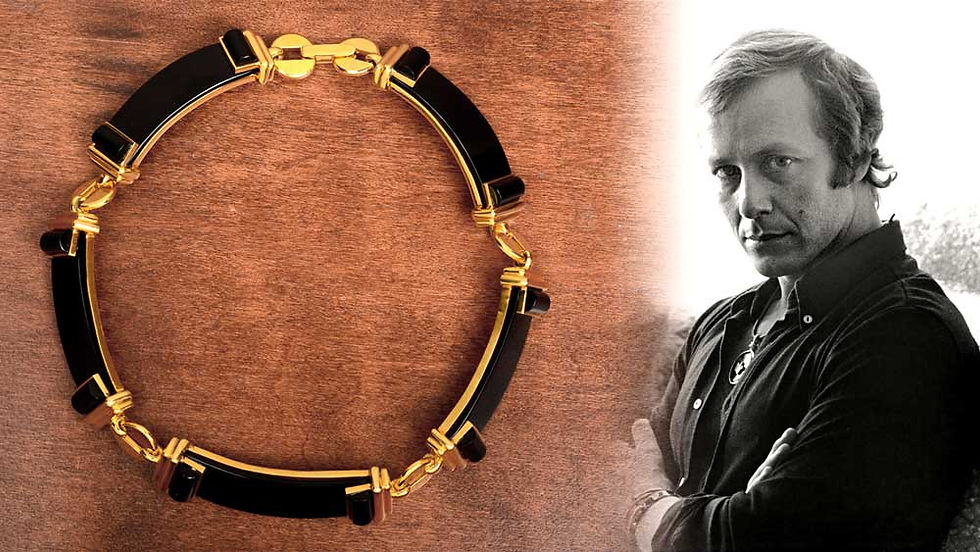SIGNATURE DESIGN LANGUAGE: How Icons Make Brands Unforgettable
- Arman Poureisa

- 2 hours ago
- 3 min read
In the context of this article, 'signature design language' refers to the unique visual elements that a brand consistently uses across its products, creating a visual identity that is instantly recognizable to consumers. Design is a language in high-end fashion and lifestyle, not just looks. A brand can be defined forever by a single visual code that is used with confidence. Rimowa recently showed off its new line of leather bags. One of them is a sleek hobo bag featuring the company's signature grooved texture, a design element inspired by its famous aluminium suitcases. What happened? A smooth expansion of the Rimowa brand into new product areas.
The Strength of Signature Codes
Some brands are so iconic that you can recognize them from a distance, even without their logo. The quilted leather and chain strap of Chanel's 2.55, the red sole of Christian Louboutin's pumps, or the check pattern of Burberry all tell a story of heritage and identity. When Louboutin released its F1-themed heels this year, it wasn't just about the glamour of motorsports; it was about merging the unmistakable red sole with an event as grand as Formula 1, a testament to the timeless appeal of their signature design codes. The same rule applies to all luxury items. The green-red-green stripe from Gucci, the monogram canvas from Louis Vuitton, and the Medusa head from Versace are all classic symbols. Celebrities make these codes even stronger. For example, Rihanna wears Fenty x Puma creepers, Zendaya is a Louis Vuitton ambassador, and Kylie Jenner shows off Bottega Veneta's intrecciato woven leather.
Rimowa's grooved aluminum is more than just a design element for luggage; it's a global symbol of jet-set sophistication, thanks to partnerships with Dior, Off-White, and Supreme. Bottega Veneta also built an empire around intrecciato weaving, which is so strong that it can be recognized even without a logo. Goyard's hand-painted chevron canvas is popular with celebrities like Kanye West and Madonna, and it has a cult following due to its artistic quality. Functional design elements, such as the Audemars Piguet Royal Oak's octagonal bezel and the Rolex Oyster case, exemplify design features that serve a practical purpose while also becoming iconic brand signatures in the watch industry.
The Modern Stage: New Ideas and Famous People
Brands are changing the way they use their codes to appeal to younger people. Balenciaga's Triple S sneakers made a chunky-silhouette signature, and Jacquemus' micro Le Chiquito bag turned a fun proportion into a viral identity. Wellness brands are even finding their own design style; Elemis is known for its spa-quality skincare products. It utilized its presence at Formula 1 race days to demonstrate that you can remain relaxed in high-stress situations. Collaborations with celebrities are a powerful tool in strengthening brand signatures. Pharrell Williams for Louis Vuitton, Jennie of Blackpink for Chanel, and Serena Williams for Audemars Piguet are all shining examples of how the right people can elevate these codes to a global stage, showcasing the collective influence that can make a brand's identity stand out.
What Future Leaders Can Learn
What is the most important thing to learn from all of this? Brands that have a code are brands that last. Signature design language is what turns an accessory into an icon and an object into a legend. It can be a color, a texture, a pattern, or even a shape. Rimowa's grooved suitcases, now transformed into leather bags, remind us that innovation and continuity can coexist in a single design. Students in Raffles' Fashion Marketing and Management program delve deep into these case studies to understand how heritage brands maintain their DNA while expanding their reach. This is where future leaders learn the art of creating unique identities that resonate with people of all ages, and even have the potential to design the next global icon, underscoring the educational value of studying brand case studies.
References
Business of Fashion. (2025). How design codes build brand identity in luxury. Business of Fashion. https://www.businessoffashion.com
Rimowa. (2025). Style news: Rimowa debuts leather bags, F1-themed Louboutins and race-day relaxation with Elemis. The Straits Times. https://www.straitstimes.com/life/style/style-news-rimowa-debuts-leather-bags-f1-themed-louboutins-and-race-day-relaxation-with-elemis
Forbes. (2024). Why Bottega Veneta’s intrecciato remains timeless. Forbes. https://www.forbes.com
Vogue. (2024). The enduring power of Chanel’s 2.55 handbag. Vogue. https://www.vogue.com
WWD. (2024). Signature codes: How Burberry, Gucci, and Louis Vuitton keep icons alive. WWD. https://wwd.com
Christie’s. (2023). Audemars Piguet Royal Oak and the art of iconic watchmaking. Christie’s. https://www.christies.com














Comments